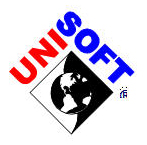Technical Library | 2022-06-27 16:50:26.0
Electronics industry is one of the fastest evolving, innovative, and most competitive industries. In order to meet the high consumption demands on electronics components, quality standards of the products must be well-maintained. Automatic optical inspection (AOI) is one of the non-destructive techniques used in quality inspection of various products. This technique is considered robust and can replace human inspectors who are subjected to dull and fatigue in performing inspection tasks. A fully automated optical inspection system consists of hardware and software setups. Hardware setup include image sensor and illumination settings and is responsible to acquire the digital image, while the software part implements an inspection algorithm to extract the features of the acquired images and classify them into defected and non-defected based on the user requirements. A sorting mechanism can be used to separate the defective products from the good ones. This article provides a comprehensive review of the various AOI systems used in electronics, micro-electronics, and opto-electronics industries. In this review the defects of the commonly inspected electronic components, such as semiconductor wafers, flat panel displays, printed circuit boards and light emitting diodes, are first explained. Hardware setups used in acquiring images are then discussed in terms of the camera and lighting source selection and configuration. The inspection algorithms used for detecting the defects in the electronic components are discussed in terms of the preprocessing, feature extraction and classification tools used for this purpose. Recent articles that used deep learning algorithms are also reviewed. The article concludes by highlighting the current trends and possible future research directions.
Technical Library | 2024-04-29 21:39:52.0
In this paper, we develop and put into practice an Automatic Optical Inspection (AOI) system based on machine vision to check the holes on a printed circuit board (PCB). We incorporate the hardware and software. For the hardware part, we combine a PC, the three-axis positioning system, a lighting device and CCD cameras. For the software part, we utilize image registration, image segmentation, drill numbering, drill contrast, and defect displays to achieve this system. Results indicated that an accuracy of 5µm could be achieved in errors of the PCB holes allowing comparisons to be made. This is significant in inspecting the missing, the multi-hole and the incorrect location of the holes. However, previous work only focusses on one or other feature of the holes. Our research is able to assess multiple features: missing holes, incorrectly located holes and excessive holes. Equally, our results could be displayed as a bar chart and target plot. This has not been achieved before. These displays help users analyze the causes of errors and immediately correct the problems. Additionally, this AOI system is valuable for checking a large number of holes and finding out the defective ones on a PCB. Meanwhile, we apply a 0.1mm image resolution which is better than others used in industry. We set a detecting standard based on 2mm diameter of circles to diagnose the quality of the holes within 10 seconds.
| 1 |

PCB Electronics Manufacturing Automation Software for EMS, OEM & ODM manufacturers. Over 3000 customers worldwide!
116A Research Dr.
Milford, CT USA
Phone: (888) 486-4246